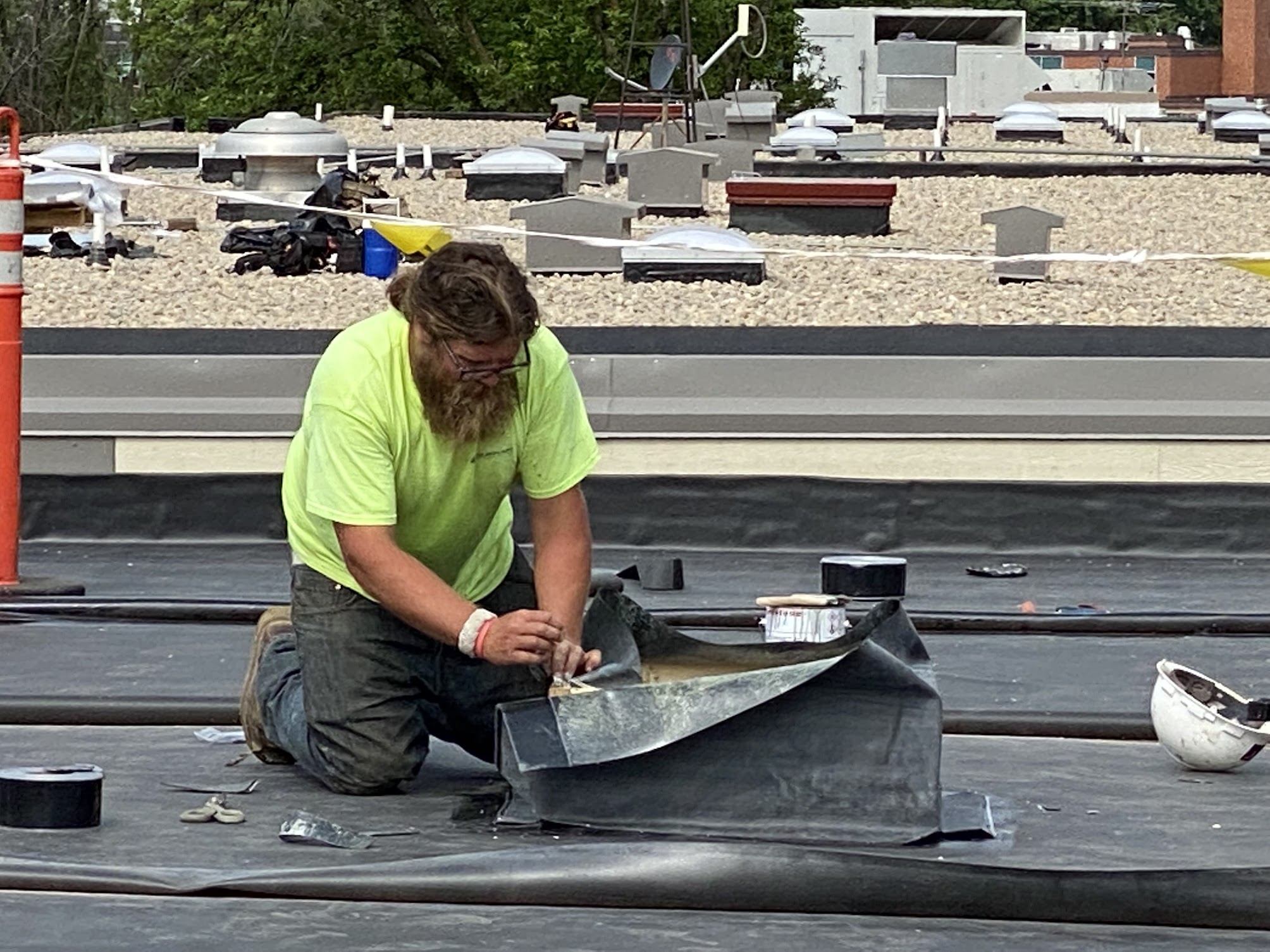Why Preventative Maintenance Matters
Preventative maintenance is a proactive approach to building care focusing on routine inspections, regular maintenance, and early detection of potential issues3. For commercial roofs, this means addressing minor problems—such as leaks, cracks, or loose materials—before they escalate into costly repairs or premature roof replacement.
Extended Roof Lifespan
One of the primary benefits of a preventative maintenance program is the extended lifespan of your commercial roof. On average, a well-maintained commercial roof can last 25% longer than a neglected one. This significant increase in longevity can postpone the need for a costly replacement, providing your business with substantial capital savings and a more predictable budget.
Reduced Repair Costs
According to the National Roofing Contractors Association (NRCA), proactive roof maintenance can reduce repair costs by up to 50%. By identifying and addressing minor issues early, you can avoid the need for emergency repairs, which are often more expensive and disruptive to your business operations.
Improved Budgeting and Financial Planning
A structured maintenance program allows for better financial planning. Property managers can anticipate routine maintenance costs and avoid the financial strain of extensive, unexpected repairs. This approach ensures maintenance is completed in a controlled, scheduled manner, helping owners manage cash flow more effectively.
Key Components of a Preventative Maintenance Program
An effective preventative maintenance program for commercial roofs typically includes the following elements:
- Regular Inspections: At a minimum, annual inspections should be conducted, preferably in spring or fall. Additional inspections may be necessary after severe weather events.
- Customized Maintenance Schedule: The program should be tailored to your specific roof type, age, and environmental factors.
- Prompt Repairs: Any issues identified during inspections should be addressed quickly to prevent further damage.
- Detailed Documentation: Comprehensive reports outlining the roof’s condition, repairs made, and recommendations for future maintenance should be provided.
- Priority Service: In case of emergencies between scheduled inspections, your maintenance provider should offer priority service.
Benefits of Implementing a Preventative Maintenance Program
1. Avoid Costly Emergency Repairs
For instance, a well-maintained roof reduces the risk of sudden failures, such as leaks during heavy rain, minimizing the likelihood of unplanned and expensive repairs that can disrupt operations.
2. Ensure Warranty Compliance
Many roofing warranties require regular maintenance to remain valid. A preventative maintenance program helps ensure you’re meeting these requirements.
3. Improve Energy Efficiency
A properly maintained roof can contribute to better insulation and energy efficiency, potentially lowering your building’s energy costs.
4. Enhance Safety
Regular inspections and maintenance can identify potential safety hazards, such as weak spots or trip hazards, before they cause accidents.
5. Protect Interior Assets
By preventing leaks and water damage, a well-maintained roof protects the valuable assets inside your building, including inventory, equipment, and furnishings. This protection ensures the continuity of your business operations and the safety of your investments.
Case Study: The Power of Preventative Maintenance
Consider the success story of ABC Company, a large suburban office building owner. After implementing a preventative maintenance program, they identified and addressed several minor issues that could have led to significant problems if left unchecked. These included clogged drains, damaged flashings, and deteriorating sealant around rooftop equipment.
By addressing these issues early, ABC Company avoided costly repairs and potential liability issues. When it came time to replace their roof after 20 years, the original materials were still in excellent condition, resulting in significant cost savings.
Conclusion
Implementing a preventative maintenance program for your commercial roof is not just a wise business decision—it’s an essential one. Investing in regular inspections and maintenance can extend your roof’s lifespan, reduce repair costs, improve budgeting, and protect your valuable assets.
If you’re ready to take a proactive approach to your commercial roof maintenance, consider partnering with a reputable roofing company that offers comprehensive preventative maintenance programs. Mint Roofing’s TopSite Preventative Maintenance Program is designed to keep your roof in optimal condition year-round, providing peace of mind and long-term cost savings. Contact Mint Roofing today to learn how their expertise can help protect your commercial roofing investment for years to come.
FAQs: Preventative Maintenance for Commercial Roofs
Q: What is the typical cost of a preventative maintenance program for commercial roofs?
A: The cost of a preventative maintenance program can vary based on the size of the roof, its age, and the specific services included. Generally, it is a fraction of the cost of major repairs or premature roof replacement. Many companies find that the long-term savings and benefits far outweigh the initial investment.
Q: How often should I inspect my commercial roof?
A: It is recommended to inspect your commercial roof at least once a year, ideally in spring or fall. Additional inspections should be conducted after severe weather events, such as heavy storms or extreme temperature fluctuations, to ensure no damage has occurred.
Q: What are the most common issues identified during roof inspections?
A: Common issues identified during roof inspections include clogged drains, damaged flashings, deteriorating sealants, loose or missing roofing materials, and signs of wear around rooftop equipment. Early detection of these issues can prevent more serious problems from developing.
Q: Can I perform roof maintenance myself, or do I need a professional?
A: While some minor tasks might be manageable for building staff, comprehensive roof inspections and maintenance are best performed by experienced professionals. They have the training and equipment to safely identify and address potential issues without causing further damage.
Q: How does preventative maintenance impact my roof warranty?
A: Many roofing warranties require regular maintenance to remain valid. By implementing a preventative maintenance program, you ensure compliance with these requirements, protecting your warranty and ensuring coverage in case of future issues.


